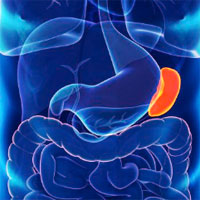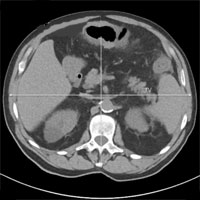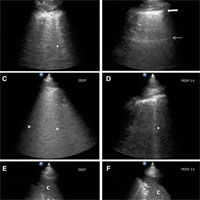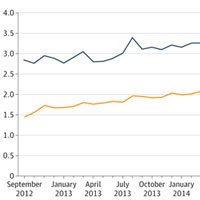Stories Category: Intensive Care

Hemodynamic Monitoring – The Why, When, Which and What
Although the need to properly assess and monitor the hemodynamic status of a critically ill patient appears self-evident, the plethora of information in the published literature over the past two decades has resulted in complexity... read more

The Spleen: The Forgotten Organ in AKI of Critical Illness
Acute kidney injury (AKI) is an increasing medical burden and is independently associated with mortality. AKI is a common comorbidity in the intensive care unit (ICU), with sepsis-associated AKI seen in almost a quarter of... read more

Abdominal Compartment Syndrome
Abdominal compartment syndrome (ACS) is defined by sustained intra-abdominal pressure (IAP) > 20 mm Hg with associated organ injury. The condition was first described in 1863, but not significantly discussed until the 1990s.... read more

Echocardiographic Assessment of LV Diastolic Pressure
The ever-increasing trend toward noninvasive monitoring puts echocardiography at the forefront and considerable effort has been made to define its role in this setting. Invasive pressure measurement is the only accurate... read more

Possible Link Between Splanchnic Circulatory Changes and Exhaled CH4
The aim of this study was to explore the possible link between splanchnic circulatory changes and exhaled CH4 in an attempt to recognize intestinal perfusion failure. Methane (CH4) breath test is an established diagnostic... read more

Amount of Muscle Mass During ICU Admission May Be Linked to Survival
In the study cohort, ICU admission pectoralis muscle area (PMA) was associated with survival during and following critical illness; it was unable to predict regaining an independent lifestyle following discharge. ICU admission... read more

Management of Cardiogenic Shock
Cardiogenic shock (CS) remains the most common cause of death in patients with acute myocardial infarction although mortality could be reduced from formerly ∼80% to 40–50%. In addition to percutaneous coronary intervention... read more

Risk of Sepsis and Mortality Among Patients with COPD Treated With Angiotensin-Converting Enzyme Inhibitors or Angiotensin Receptor Blockers
Angiotensin receptor blockers were associated with lower rates of sepsis and mortality than angiotensin-converting enzyme inhibitors in the patients with chronic obstructive pulmonary disease. The similar findings were also... read more

Early Goal-directed Therapy Using a Physiological Holistic View
If peripheral perfusion-targeted resuscitation improves 28-day mortality, this could lead to simplified algorithms, assessing almost in real-time the reperfusion process, and pursuing more physiologically sound objectives.... read more

Ultrasound for Lung Monitoring of Ventilated Patients
In the intensive care unit, patient lung ultrasound provides accurate information on lung morphology with diagnostic and therapeutic relevance. It enables clinicians easy, rapid, and reliable evaluation of lung aeration and... read more

Podcast Use and Preferred Content Among Residents
This study is the first to report podcast content needs and preferred formats among specialty trainees. Anesthesia residents appear to have well defined podcast content preferences. In addition, senior and junior anesthesia... read more

Association of an Emergency Department–Based ICU With Survival and Inpatient ICU Admissions
The purpose of this study is to determine the association of a novel ED-based ICU, the Emergency Critical Care Center (EC3), with 30-day mortality and inpatient ICU admission. In this cohort study of 349,310 patient encounters... read more

A Core Outcome Set for Critical Care Ventilation Trials
The main objective for this study was to obtain international consensus on a set of core outcome measures that should be recorded in all clinical trials of interventions intended to modify the duration of ventilation for... read more

Essentials of Mechanical Ventilation
The acclaimed application-based guide to adult mechanical ventilation, updated to reflect the latest topics and practice guidelines. This practical guide is written from the perspective of authors who have nearly 100 years'... read more








